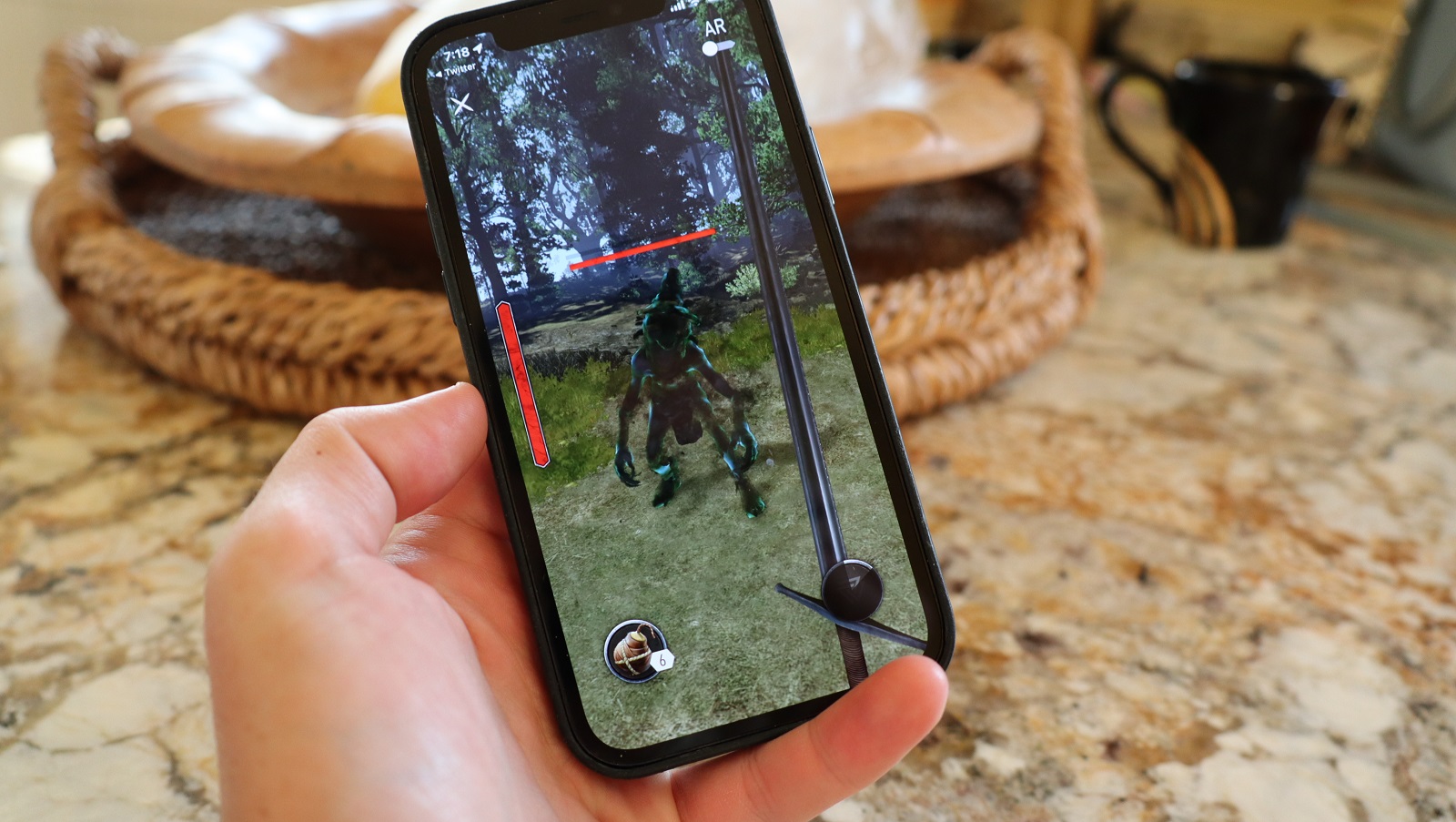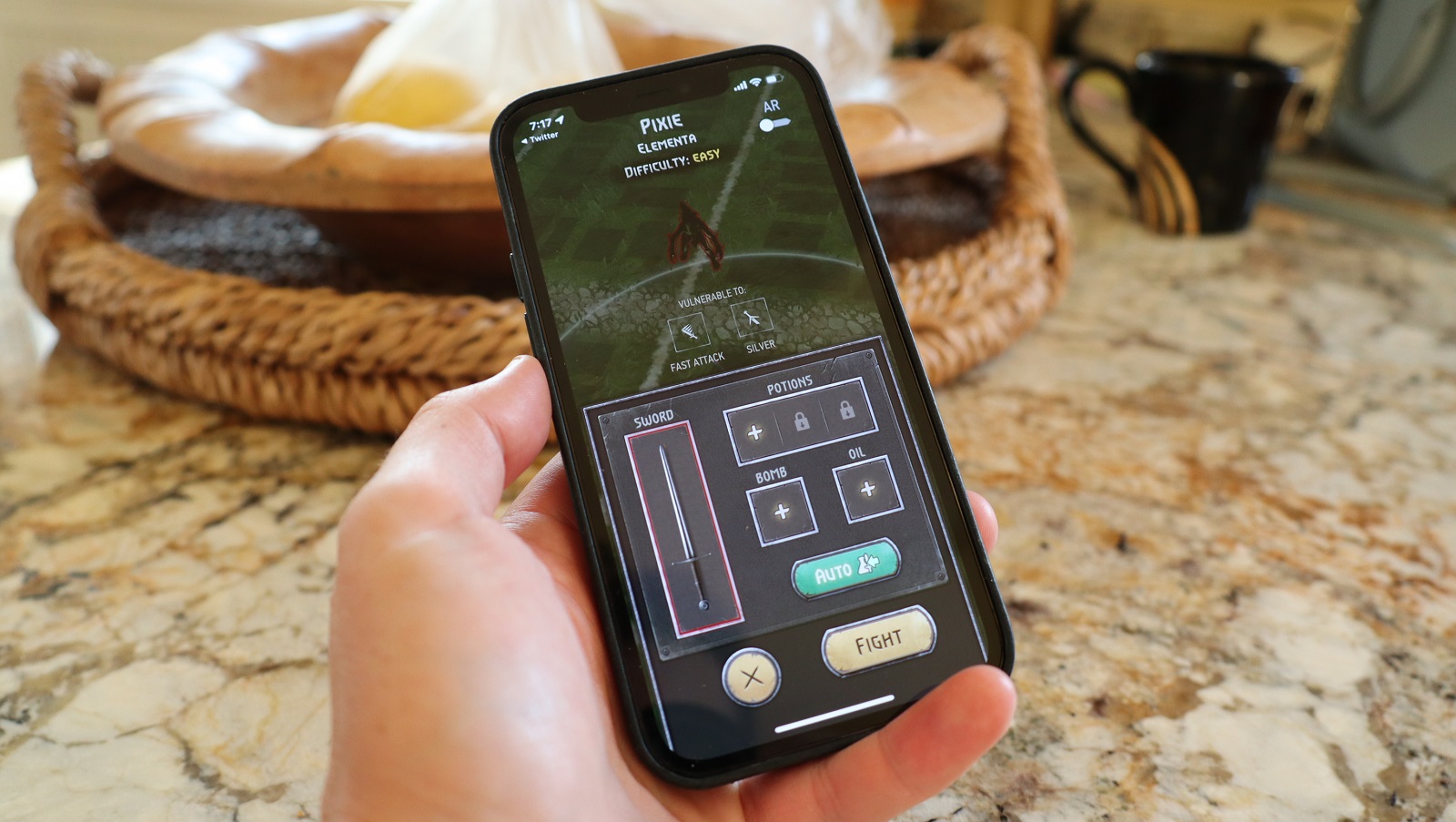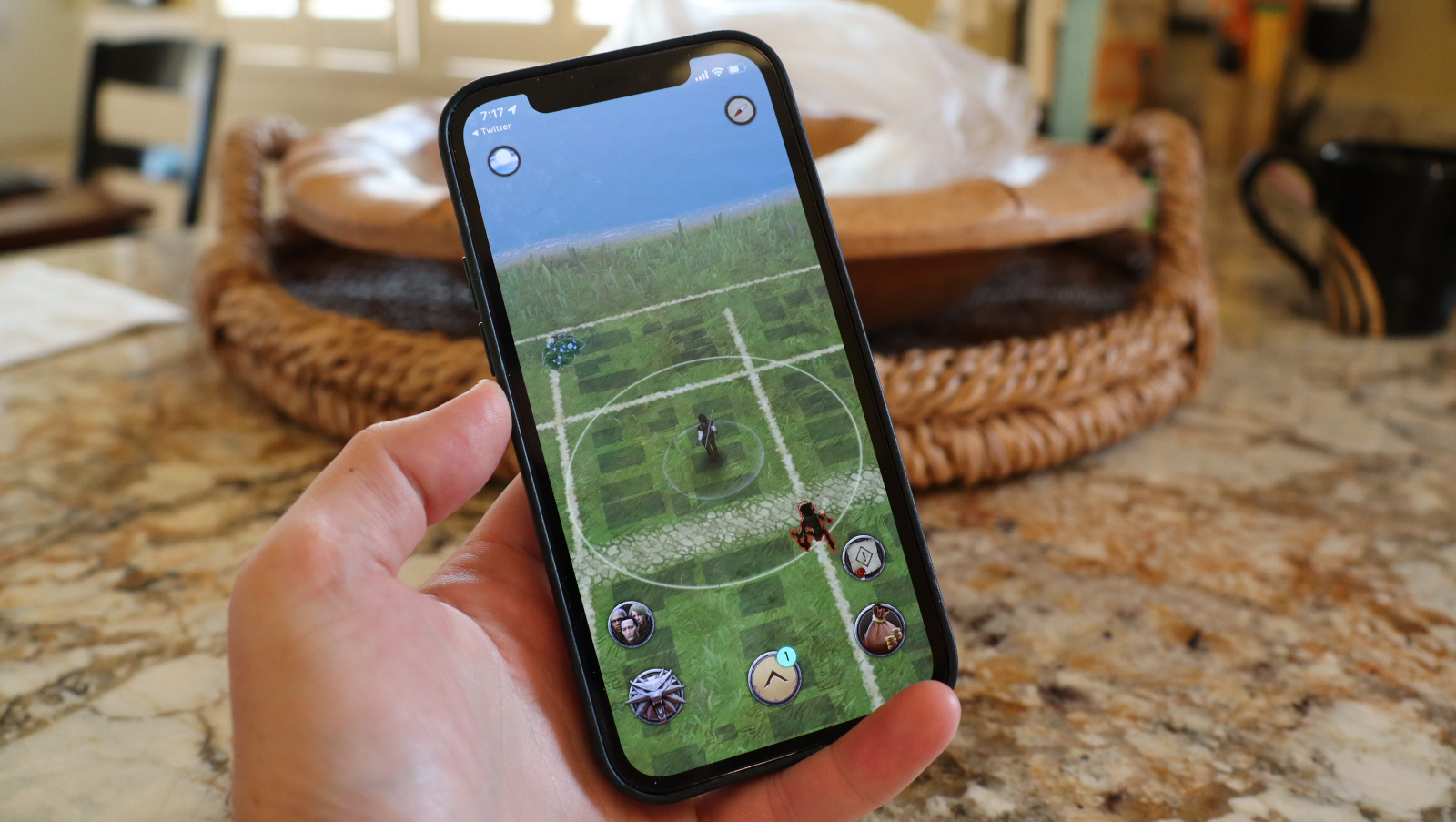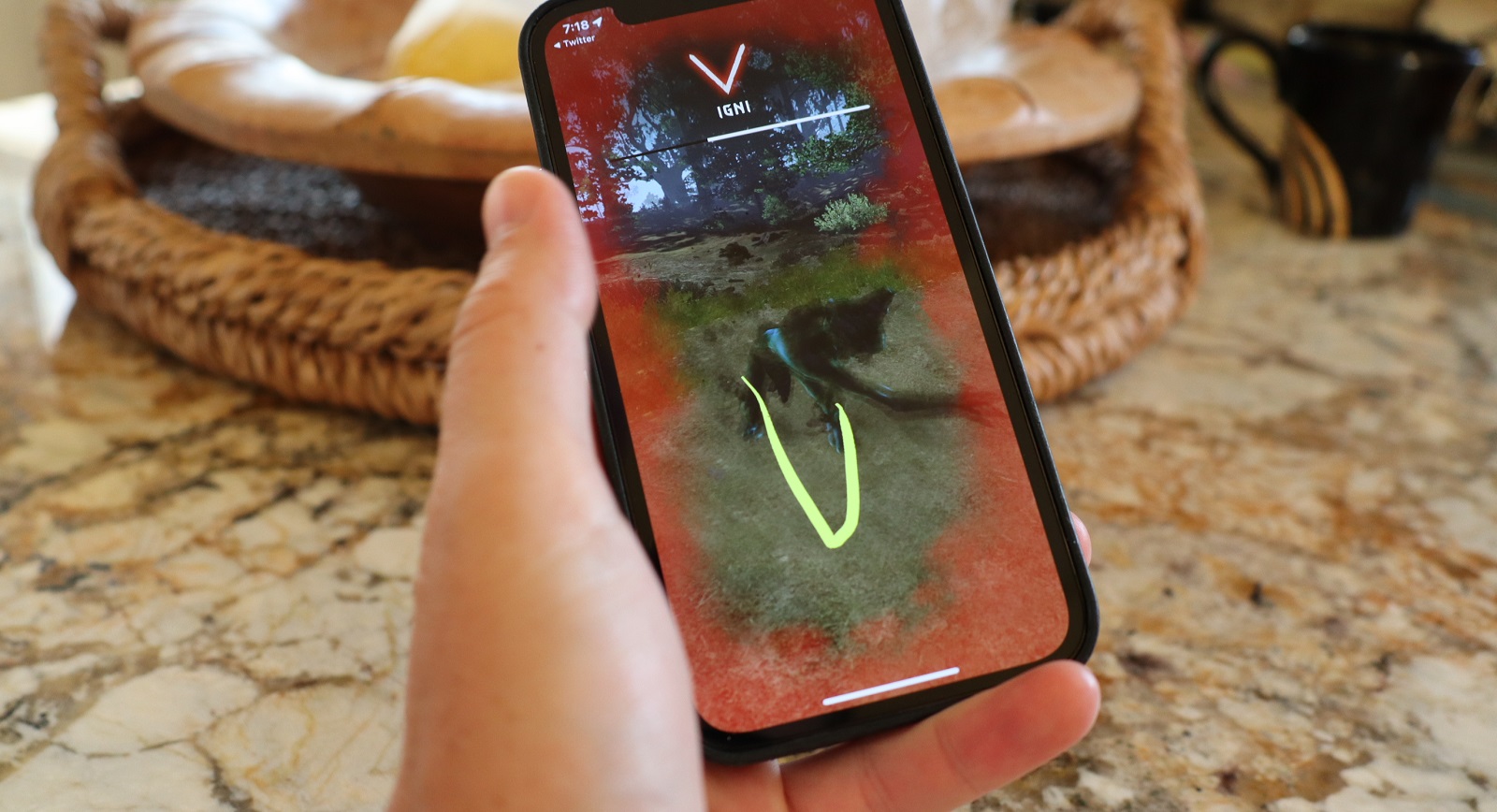The Witcher: Monster Slayer is Pokemon Go meets Elder Scrolls: Blades – and we played it

The Witcher began as a dark fantasy book series before exploding in popularity with the eponymous video games, and the franchise has reached new audiences with the Netflix TV show. Naturally, the time seems ripe for a mobile game to land big with fans – so get ready for a game inspired by…Pokémon Go?
Yes, The Witcher: Monster Slayer, a new game developed by Poland-based studio Spokko set for a global launch on July 21, is a location-based mobile game that overlays your surroundings with fantastical environments chock full of monsters and quests. Similar to game developer Niantic’s hit Pokémon Go, you’ll have to wander around IRL to encounter challenging enemies, harvest items, and explore the story.
The game is a bit of a blend of Pokémon Go and Elder Scrolls: Blades – instead of capturing monsters, you’ll swipe your finger to slash them with your sword, though you’ll probably want to prepare with oils, potions, bombs, and magic suited for each foe, just like in the main games. But Monster Slayer has something unique that fits its rich literary, interactive, and cinematic origins: story.

“It’s not that easy on mobile to make a story-driven game, and it’s even tougher to make a location-based game, but that creates many, many opportunities,” said The Witcher: Monster Slayer Quest Designer and Story Lead Przemek Tarczyński to TechRadar in an interview. “I don’t think anybody else ever tried it, at least at such scale or with such success.”
Monster Slayer will have a progression of quests that tell a story fitting the dark, dangerous world of the Witcher. Players will, of course, play one of the titular magic-enhanced warriors, and follow both a main storyline told through 2D-animated cinematics and dialogue between characters using the game’s 3D engine. While the game’s developers didn’t want to spoil the details, they hinted at an epic story worthy of the franchise.
But don’t worry, you’ll also stumble upon some familiar Witcher quests requiring some monster-killing dirty work, like getting asked to chase down a villager abducted by Nekkars, Tarczyński told us – you’ll just have to run down the baddies in the real world this time.

And along the way, don’t be surprised if you run into some familiar faces from the franchise, but a heads up: Monster Slayer is set 200 years before the games and show begin, so don’t expect to run into Gerald, Yennefer, Ciri, Dandelion (Jaskier to the Netflix watchers) or others who wouldn’t fit such a timeline.
Starting the game earlier gives the team plenty of design space to tell new stories, especially since, in that era of the Witcher universe, there are far more of the monster hunters roaming around (slanderous propaganda turns the public against Witchers and their numbers are whittled down until few remain in Geralt’s time).
“We found that this experience of being a Witcher and building your own story in that universe is something fresh,” said Witcher: Monster Slayer Executive Producer Mateusz Janczewski. “This will be a game about millions of Witchers in the world, and we thought that would be something sexy that we thought would be cool for the players.”
Prepare your phones for the worldwide premiere of The Witcher: Monster Slayer — coming to iOS and Android for free on July 21st! Android users can pre-register right now on the Google Play Store: https://ift.tt/3hs5HEO you on the Path!#TheWitcherMonsterSlayer pic.twitter.com/rFfYXl6pIGJuly 2, 2021
Wotcher, Witcher
The Witcher: Monster Slayer is a free-to-play mobile game, which means players can run through the game without spending any money – but if they want, they’ll be able to purchase extra resources to make equipment as well as combat items (like oils, potions, and bombs). Quests and story content won’t cost anything extra and will be available to all players at launch.
The game’s story will be told in quests found out in the world – at launch, six main quests and six hidden quests – which players have to physically approach to engage with. While the Monster Slayer team agrees this is a tricky issue, especially for players who have limited mobility (some monsters and items will randomly spawn around players, but quests seem to be some distance away), the developers believe this is a core appeal of the game. Folks can play the Witcher 3 at home, but to experience Monster Slayer, they need to venture into the world – and that can result in some serendipitous IRL experiences.
“For example, it can be that the [quest objective] is on the other side of the river and you need to find a bridge and it won’t be so close as you thought, and maybe you will need to visit the part of your city that you never visited,” Tarczyński said. “It’s kind of a LARP more than an RPG.”
There’s something else unique that could make Monster Slayer “one of the most hardcore RPG experiences ever,” as Tarczyński puts it: the game is constantly saving your progress. If you make a decision in the story, it’s locked in forever (unless you want to start over with a new character), since you can’t just load up an old save file. As he puts it, “If you make a choice, you have to live with the consequences.”
Those effects may not be felt immediately, but could have ramifications down the line: Monster Slayer will add more story quests with Seasons, which are expected to come twice a year. Seasons will add more content and fill out what’s happening in a world set 200 years before that of the main games.
In theory, Monster Slayer’s story could catch up to the plot of the main games, Janczewski noted, but that’s a long timeline to fill before the mobile game catches up: “At some point, because we’re doing the service game with free-to-play, maybe at some point we’ll be able to get to the point when Geralt is alive, you know? You never know what happened.”

What it’s like to be a Witcher
In our time with an early build of The Witcher: Monster Slayer, it does feel like a game steeped in the world of the games, show, and books. We hacked and slashed our way through familiar enemies and prepared for fights with oils and potions specifically tuned for monster groups. We drew signs on the screen to cast magic (a ‘V’ to spew fire with Igni, for instance, matching its glyph). We picked herbs off the ground to toss in a cauldron.
Monster Slayer clearly owes a lot to location-based games like Inverse and Pokemon Go, overlaying a map of my area with monsters, items, and other places of interest. It’s honestly more fun to hack apart enemies than it was to catch Pokemon, but don’t expect complex combat - the fun will mostly be in feeling like there’s more going on in your neighborhood of a grim, supernatural variety.

Truth be told, we haven’t experienced the quests that the Spokko devs have singled out as the most unique parts of the game. Perhaps a lot of players won’t, as they’ll still enjoy a casual game that doesn’t ask too much of their time - just a few minutes here and there as I pull up the game while out on a walk. The Monster Slayer devs know this:
“Perhaps on a daily basis, you’re not going to play the quests, but when you have the weekend and you’ve got an hour, then you can start the adventure and dive into it,” Janczewski said.
Likewise, I didn’t experience the real world’s impact on the game: rain or other weather will change the kinds of monsters that appear, though I did see that different foes pop up after dark. There are even quests that change whether you complete them overnight, though the devs were coy about what would be different while wandering around at the witching hour.
But it’s a new game that costs nothing to try and evokes the sense that more is happening in our world. For fans of the franchise as well as mobile gamers looking for something to liven up their outdoor adventures - and find reasons to get out of the house - The Witcher: Monster Slayer will have plenty to offer, especially as we all wait for the second season of Netflix's Witcher show.
- This is the Steam Deck, Valve's handheld PC that looks like a Nintendo Switch
from TechRadar - All the latest technology news https://ift.tt/3iqqoRO

Post a Comment